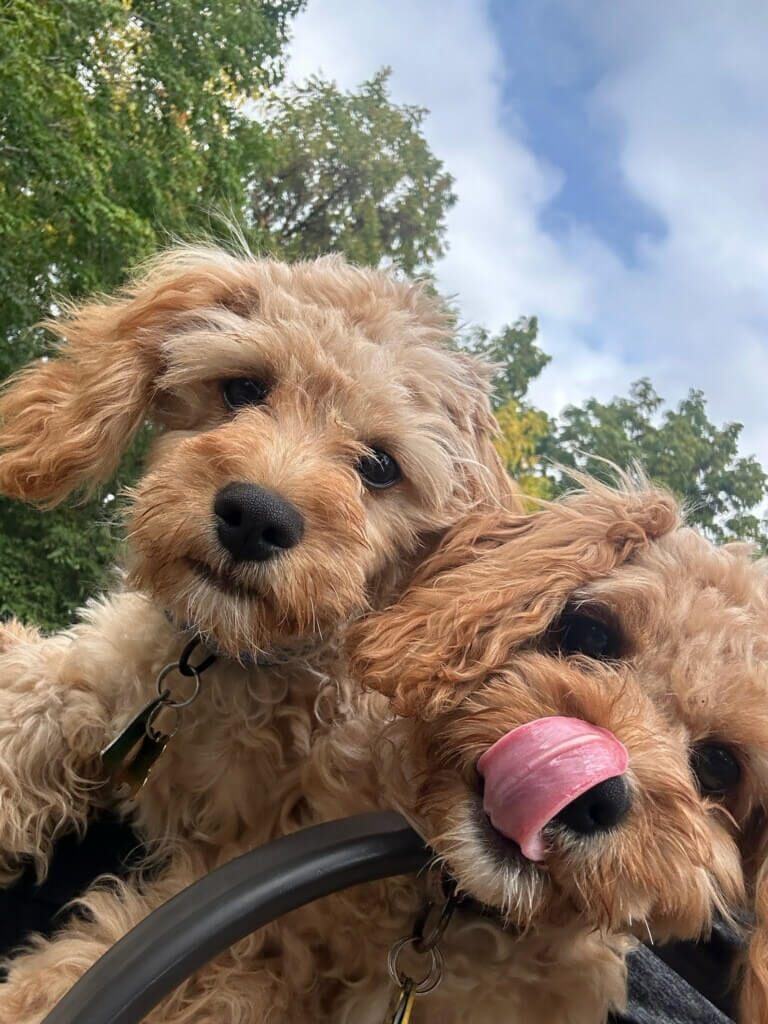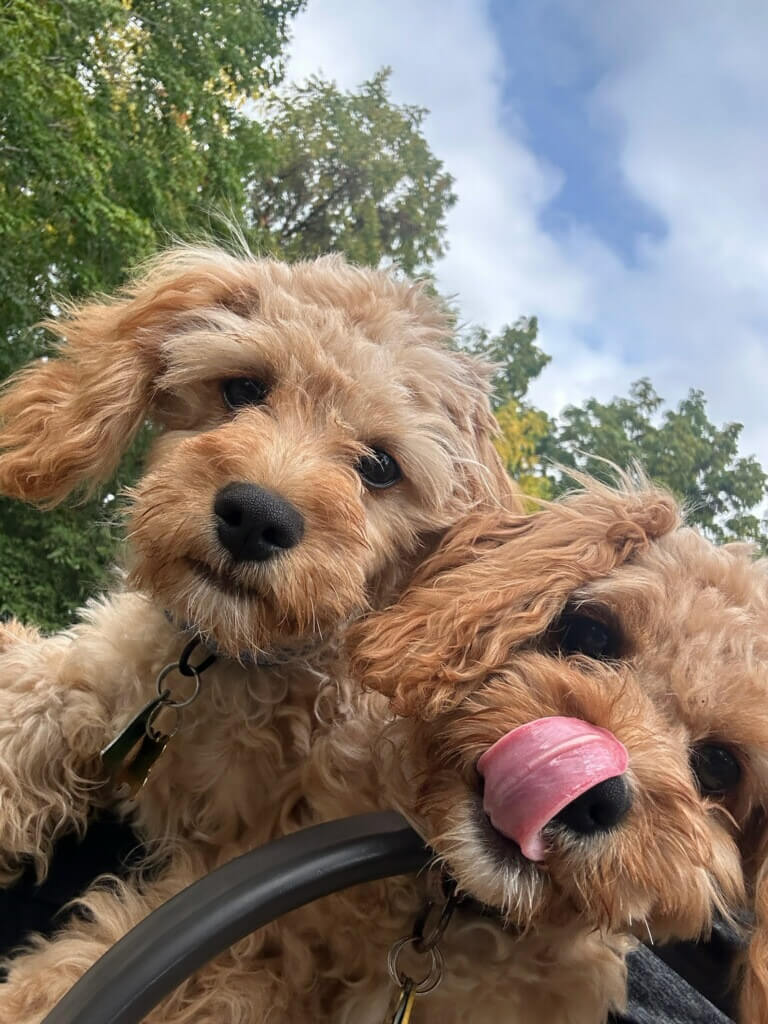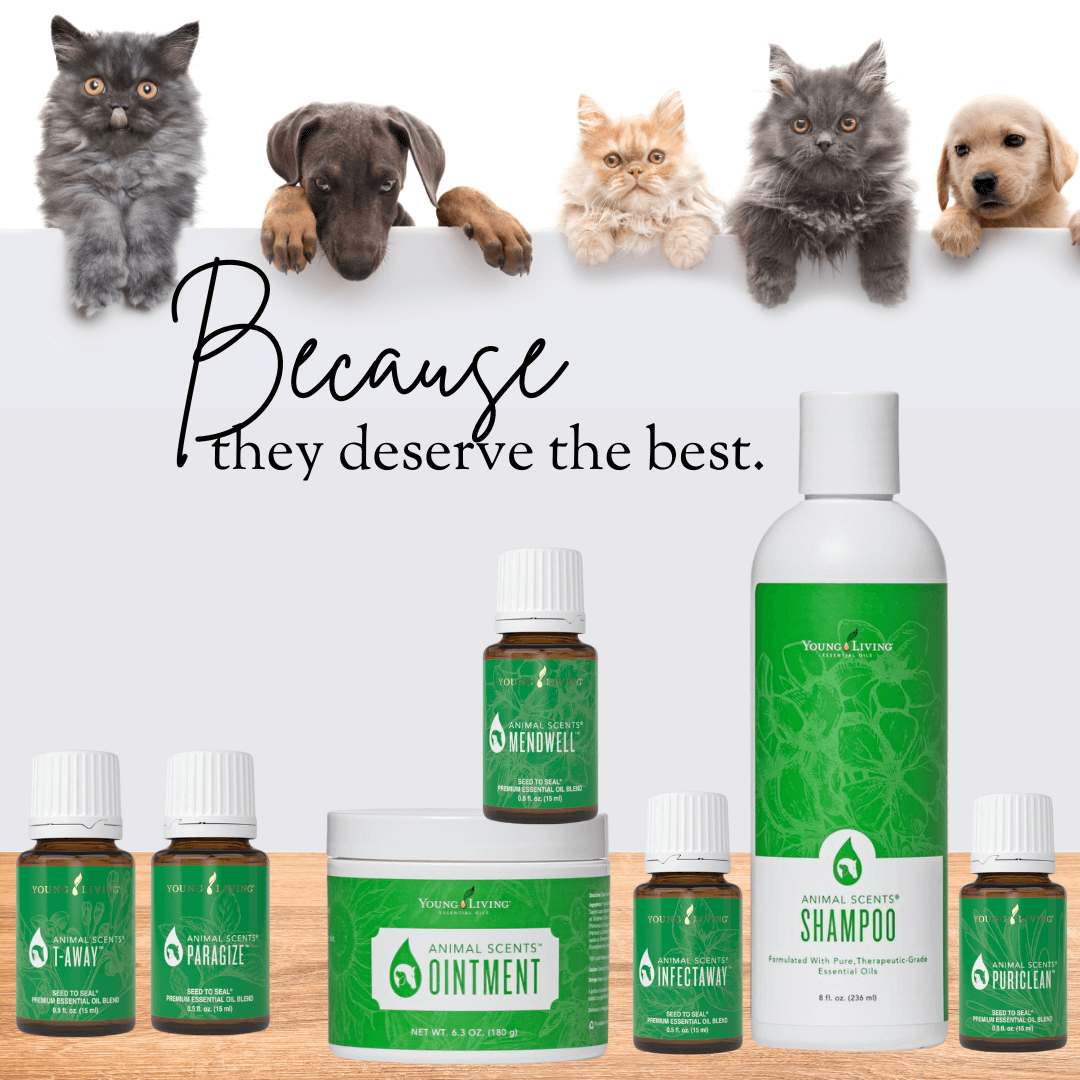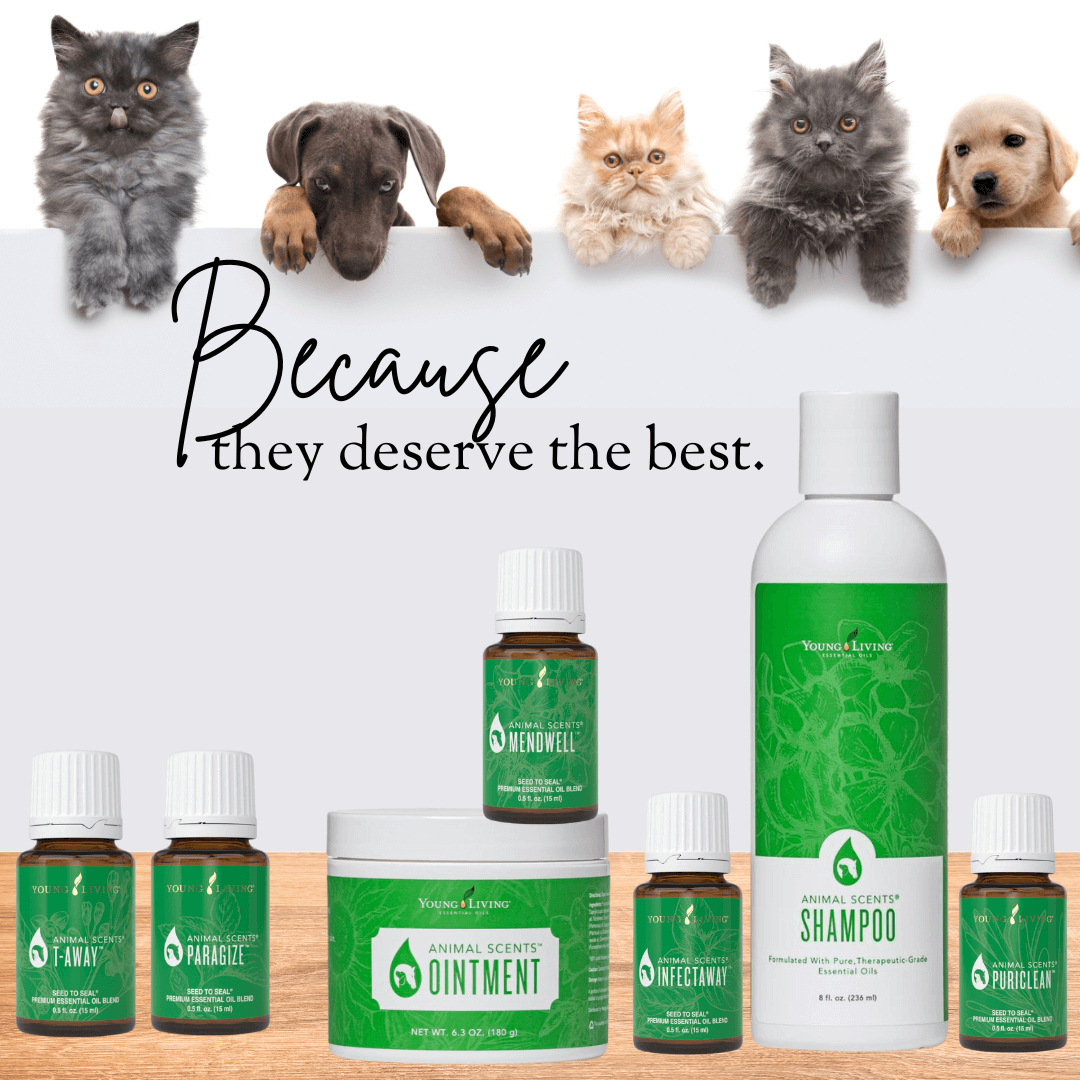
Young Living has something for your whole family!
Pet Parents
Pet health is of utmost importance as it not only ensures their physical well-being but also enhances their overall quality of life. By prioritizing proper nutrition, regular veterinary check-ups, and incorporating natural and holistic remedies like Young Living essential oils into their care routine, we can help our furry companions thrive and enjoy a vibrant and healthy life.

Young Living has something for your whole family!
Pet Parents
Pet health is of utmost importance as it not only ensures their physical well-being but also enhances their overall quality of life. By prioritizing proper nutrition, regular veterinary check-ups, and incorporating natural and holistic remedies like Young Living essential oils into their care routine, we can help our furry companions thrive and enjoy a vibrant and healthy life.
Being a pet parent can be daunting unless you have the right tools and resources.
Let's explore the Animal Scents Line
You love to share essential oils with your family, so it makes sense that you want to share them with your pets as well! Before you begin using essential oils for pets, you need to know the answers to some important questions: Can you use essential oils on dogs, cats, and other pets the same way you use them on yourself? How much should you use? What is the best way to administer oils for topical and internal use?
There are some general tips and suggestions you’ll want to keep in mind as you share essential oils with your furry friends.

- Animals are generally more sensitive to essential oils than humans are. It’s best to heavily dilute essential oils and use them in moderation.
- Use extreme caution when using essential oils on and around cats or dogs under 8 weeks old because they are developing at fast rates; it is easy to mess up the proper dilution for each breed and size.
- Every animal is different, so carefully observe how your animal responds to essential oils. Use common sense and good judgment as you try different methods. If an individual starts salivating or you notice a change in stool or vomiting or lack of appetite when using essential oils, more investigation into what oil was used, how much was used and the application technique should be done as there may be other concurrent issues happening.
- Be especially careful to not get essential oils in an animal’s eyes.
- If diffusing, always allow cats or dogs access to areas where they can avoid the diffused oil.
- With all animals, use extreme caution when using high-phenol oils—such as Oregano, Wintergreen, Clove, Mountain Savory, and Thyme. This is especially important with cats.
- Use special caution with cats and essential oils. Consult a veterinarian with essential oil experience before use around them.

Let's explore the Animal Scents Line
You love to share essential oils with your family, so it makes sense that you want to share them with your pets as well! Before you begin using essential oils for pets, you need to know the answers to some important questions: Can you use essential oils on dogs, cats, and other pets the same way you use them on yourself? How much should you use? What is the best way to administer oils for topical and internal use?
There are some general tips and suggestions you’ll want to keep in mind as you share essential oils with your furry friends.
- Animals are generally more sensitive to essential oils than humans are. It’s best to heavily dilute essential oils and use them in moderation.
- Use extreme caution when using essential oils on and around cats or dogs under 8 weeks old because they are developing at fast rates; it is easy to mess up the proper dilution for each breed and size.
- Every animal is different, so carefully observe how your animal responds to essential oils. Use common sense and good judgment as you try different methods. If an individual starts salivating or you notice a change in stool or vomiting or lack of appetite when using essential oils, more investigation into what oil was used, how much was used and the application technique should be done as there may be other concurrent issues happening.
- Be especially careful to not get essential oils in an animal’s eyes.
- If diffusing, always allow cats or dogs access to areas where they can avoid the diffused oil.
- With all animals, use extreme caution when using high-phenol oils—such as Oregano, Wintergreen, Clove, Mountain Savory, and Thyme. This is especially important with cats.
- Use special caution with cats and essential oils. Consult a veterinarian with essential oil experience before use around them.
To learn more about using Young Living Oils and Products with your pets, click below!
Template Instructions: (This section is invisible - feel free to keep it or delete it)
Canva Templates:
Image Size 875/1050: https://www.canva.com/design/DAFfvCSx8Xw/m20hZ28OdhpEr3BRSWBDnQ/view?utm_content=DAFfvCSx8Xw&utm_campaign=designshare&utm_medium=link&utm_source=publishsharelink&mode=preview
Image Size 1640x924: https://www.canva.com/design/DAFfvQ5wNUA/4XTzinzxvs5bk1d3b_v-3w/view?utm_content=DAFfvQ5wNUA&utm_campaign=designshare&utm_medium=link&utm_source=publishsharelink&mode=preview
Monica Teach
Young Living Platinum Leader
essentialoilseverydayinc@gmail.com
Wishing you vibrant health and wellness!
Monica Teach
Young Living Platinum Leader
Wishing you vibrant health and wellness!
